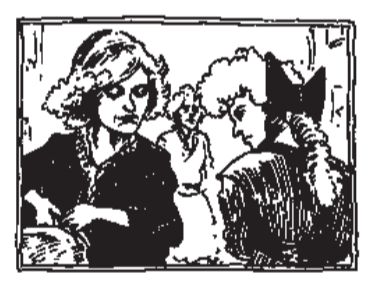At a 2001 panel on painter and film critic Manny Farber, held at the New School for Social Research and later transcribed in Artforum, Greil Marcus had this to say about a passage from Farber’s Negative Space:
… Farber is complaining about some movie, and he says, “It isn’t sustained.” Then there’s a parenthetical that says, “But how many movies since Musketeers of Pig Alley have been sustained?” What was really scary to me about this line, and it’s scary today, is that never having seen Musketeers of Pig Alley, I didn’t know if this was a joke, or if, in fact, it’s the only movie in eighty years that’s been sustained. I still don’t know. So you can dive into this book, and, if you are like me, you will never get out.
Marcus’s enthusiasm, and his vertigo, will be familiar to readers for whom Farber’s work is a touchstone. Blurbs aren’t everything, but those on the expanded edition of Negative Space, published by Da Capo Press in 1998, suggest that the list of Farber’s admirers is long, impressive, and heterogeneous. Who else could draw praise from Peter Bogdonavich and Jonas Mekas, Newsweek’s Jack Kroll and October’s Annette Michelson, Pauline Kael and Susan Sontag? Perhaps not all of these figures feel the book’s pull as strongly as Marcus—but others do. As another New School panelist, Salon editor Stephanie Zacharek, put it, “I sometimes want to shake it or throw it against the wall, but I always want it close by.”
Farber’s writing career began in 1942 at the New Republic, where he succeeded Otis Ferguson as the magazine’s regular movie reviewer. Stints followed at the Nation (after the death of friend and rival James Agee), the New Leader and, decades later, Artforum; other work ran in less august periodicals, such as the forgotten Esquire knockoff Cavalier. Negative Space first appeared (from Prager) in 1971, as carefully winnowed as a volume of selected poems, favoring think pieces over weekly reviewing. (Farber’s uncollected writing, including his pieces not even nominally about film, is forthcoming in a volume edited by Robert Polito.) The earliest inclusion is a 1943 defense of Chuck Jones cartoons; aside from an introduction, the latest are from 1969, on Samuel Fuller and that year’s New York Film Festival. The arrangement is chronological, except when it isn’t. The expanded edition, currently in print, adds seven pieces coauthored by fellow painter and wife Patricia Patterson in the 1970s, a three-way interview with Richard Thomson from 1977, a new preface by...
You have reached your article limit
Sign up for a digital subscription and continue reading all new issues, plus our entire archives, for just $1.50/month.
Already a subscriber? Sign in





